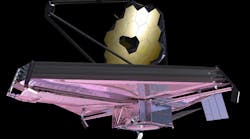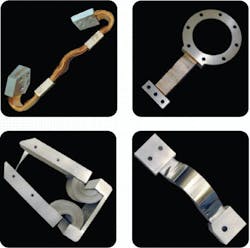Update: The primary mirror backplane support structure (PMBSS) for NASA’s James Webb Space Telescope (JWST) recently completed static testing. Delivered by Northrop Grumman and ATK, the testing demonstrated that the backplane has the necessary structure integrity to withstand the forces and vibrations that occur during launch. The PMBSS is lightweight and precision-aligned, and its stable design holds the telescope’s science instruments and its 18 beryllium mirror-segments.
Previously: The James Webb Space Telescope (JWST), which will replace the Hubble as the primary telescope for the U.S., is slated for launch in 2018. It will observe the most distant objects in the universe, providing images of the first galaxies formed and the unexplored planets around far-off stars. Recently, 35 thermal link and composite support-structure assemblies were delivered for integration into the telescope. Built by Space Dynamics Laboratory (SDL), the links will help conduct heat away from the telescope’s infrared instruments.
Made from high-purity aluminum foils, the links are lightweight while maximizing thermal conductance for optimal instrument performance. They are built on a flexible infrastructure to provide a continuous conductance path across the interfaces between the elements of the satellite’s flight instruments. The support structure and external radiators allow for integration tolerances and dynamic movement during testing and launch. The links are designed to eliminate joining materials (including solder), internal contact resistance, wicking into the foil, and outgassing.
The JWST will house four separate infrared instruments: the Near InfraRed Camera (NIRCam), the Near InfraRed Spectrograph (NIRSpec), the Mid-InfraRed Instrument (MIRI), and the Fine Guidance Sensor/Near InfraRed Imager and Slitless Spectrograph (FGS-NIRISS). The telescope is an international collaboration between NASA, the European Space Agency (ESA), and the Canadian Space Agency (CSA). Northrop Grumman signed on as the main industrial partner while the NASA Goddard Space Flight Center will manage all development efforts.

